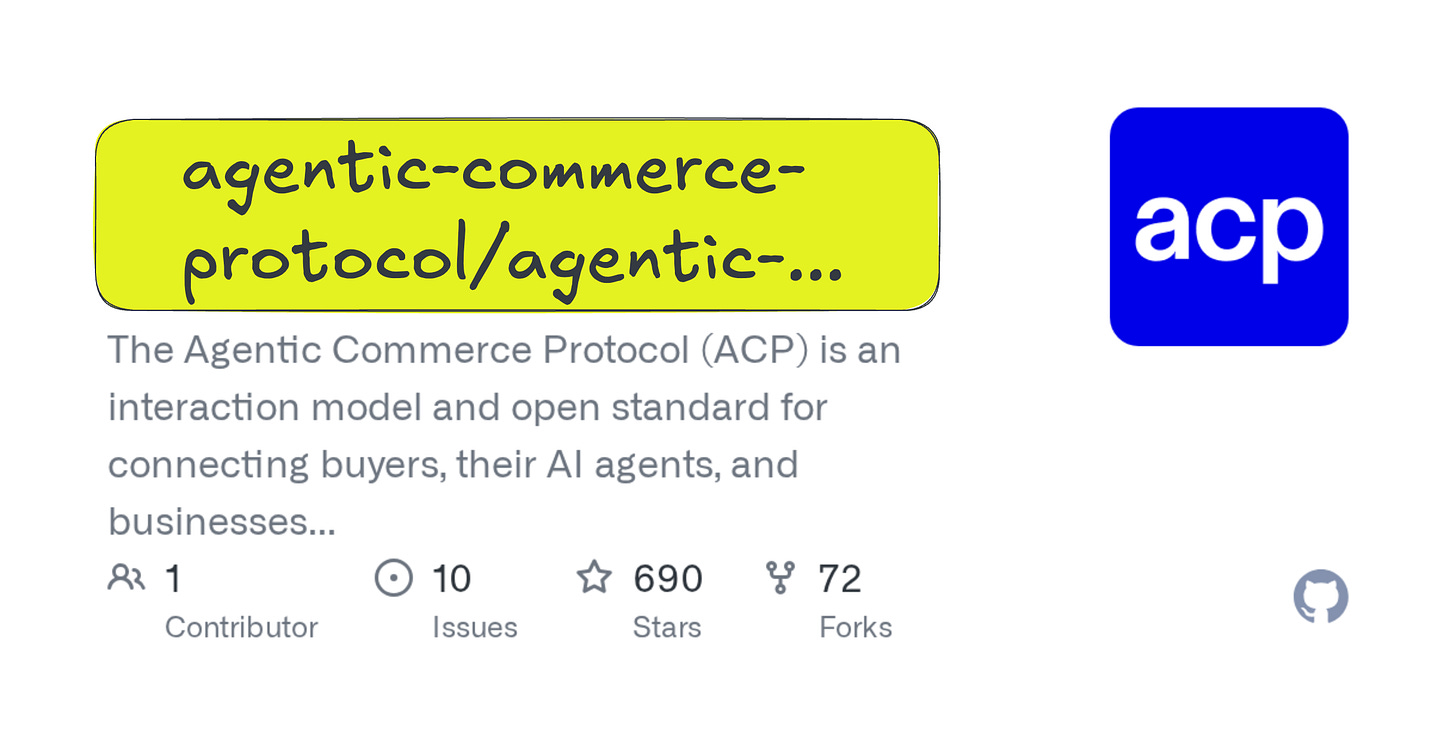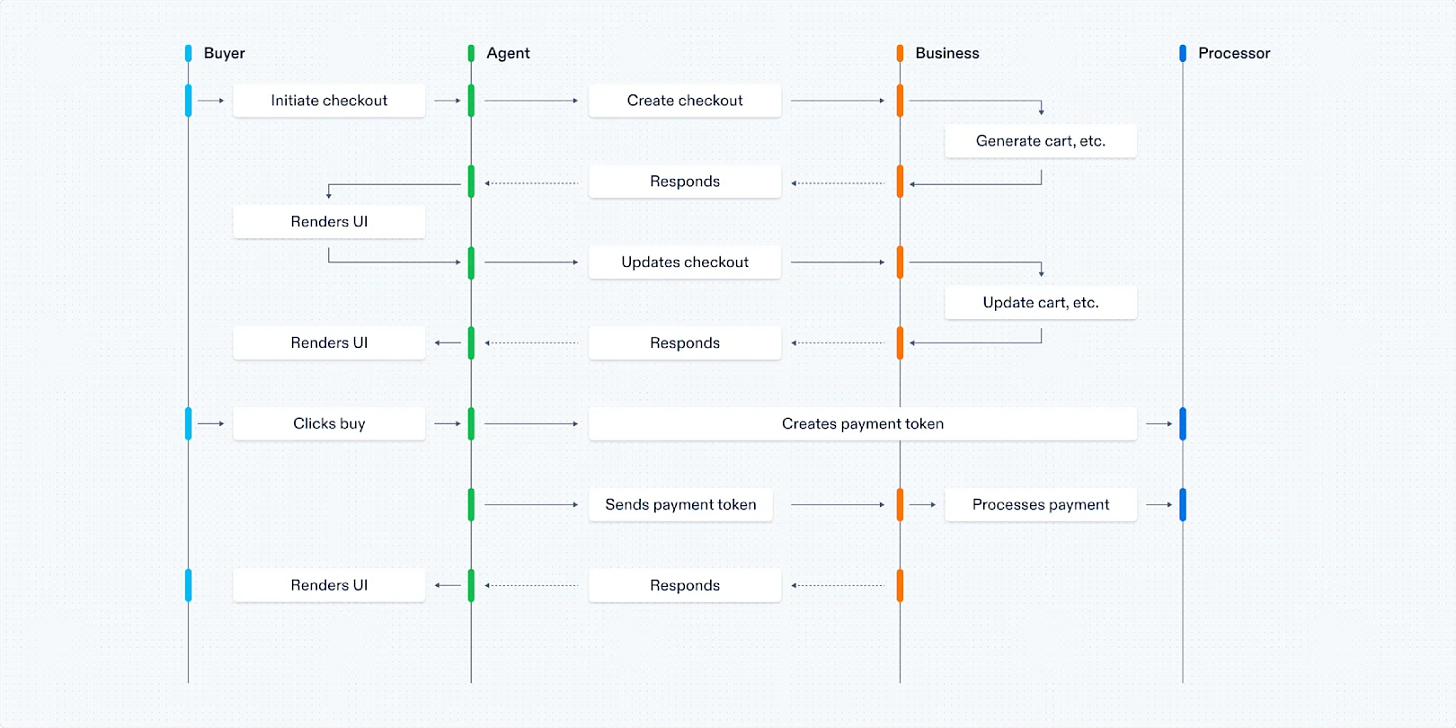Deep Dive: What OpenAI and Stripe's Agent Commerce Protocol (ACP) Means for Your Roadmap
Is chatting with an AI about your next purchase the new “add to cart”? Tech’s latest power couple, Stripe and OpenAI, certainly hope so. They’ve teamed up to launch what is essentially a new Agentic Commerce Protocol (ACP) – an open standard that lets AI agents like ChatGPT seamlessly help you shop and pay inside a conversation. In other words, ChatGPT can now act as your snarky but efficient personal shopper, recommending products and checking you out without ever tossing you to a website. It’s a bold attempt to turn AI chat into the next storefront, and it has the fintech world buzzing.
But behind the buzzwords (and there are plenty – “agentic commerce,” anyone?), what’s actually happening? More importantly, why should product managers and payments nerds care?
My take: Agentic commerce is one of those ideas that feels a bit inevitable and a bit fantastical at the same time. The inevitable part is that as AI becomes more embedded in our lives, of course we’ll want it to not just tell us what to buy but to help actually buy it. Reducing friction is the holy grail of commerce, and what’s more frictionless than “yes, that one – just buy it for me, AI friend”? If it saves time and clicks, consumers will use it – provided the trust and experience are right. The fantastical part is imagining that people en masse will change deeply ingrained shopping behaviors quickly. It will take time and iterations to get this right. There will be hiccups – an AI recommending a dud product, an order going awry because the AI misunderstood something, scams trying to exploit the new system – you name it. But the involvement of Stripe (with its payments and fraud expertise) and the insistence on keeping merchants in control are positive signs. They know that for this to work, it can’t feel like a black box or a loss of control for businesses.
ChatGPT Goes Shopping – What Happened and How It Works
A few weeks ago, OpenAI announced “Instant Checkout” in ChatGPT, powered by Stripe. For now it’s U.S. users buying from initial partners (think Etsy shops, with Shopify’s million-plus merchants coming soon). The chat goes something like this: you ask ChatGPT for, say, “best running shoes under $100”. ChatGPT suggests a few options from across the web. If one has Instant Checkout enabled, you’ll see a “Buy” button next to it. Tap it, confirm shipping and payment details, and voilà – purchase done entirely within the chat interface. No clunky redirects or forms; ChatGPT handles the heavy lifting.
So how on earth is this happening securely? Under the hood, Stripe provides a slick mechanism called the Shared Payment Token (SPT). When you hit buy, ChatGPT invokes a Stripe-powered checkout module right in the chat. Stripe either uses your saved card on file or lets you enter one (including Apple Pay, Google Pay, etc.). It then issues a one-time payment token scoped to that specific merchant and exact amount. Think of it as a single-use “ticket” that says “this user authorized $91.80 to Etsy for that cool handmade bowl”. Crucially, your actual card details aren’t exposed to the AI or the merchant – only the token is. ChatGPT (playing personal shopper) passes this token to the merchant via API. The merchant’s backend (likely running on Stripe) then charges the token like a normal payment, or even routes it to another payment processor if they prefer. Stripe built SPTs to be flexible: they can be forwarded to other processors or vaults as secure credentials, all while carrying Stripe’s fraud signals and controls along for the ride.
On receiving the order and token, the merchant’s system decides whether to accept the order (e.g. run fraud checks, verify inventory) – merchants aren’t forced to blindly trust AI orders. They “can accept or decline the order, charge the payment, handle tax, fulfillment, etc., as normal”. From the merchant’s perspective, an order from ChatGPT drops in much like an order from their own website, with all the usual controls. Shopify, for example, ensures these orders flow into the regular admin dashboard with proper attribution and fees, and Shopify’s merchants remain the merchant-of-record (keeping the direct customer relationship). In short, ACP lets an AI agent talk to a business’s existing commerce systems in a standard way – it’s essentially a common language for “AI, please submit an order for X on behalf of User Y”. And it’s designed to preserve the things businesses care about: brand identity (the buyer sees who the seller is, e.g. Etsy shop name), customer ownership, and control over the sale.
The result is a surprisingly smooth checkout experience: ChatGPT is the concierge that finds the product and carries your “wallet,” but you’re still buying directly from the merchant (payment goes to them, they fulfill the order, they handle any returns). OpenAI and Stripe have effectively built a bridge between AI platforms and traditional e-commerce, without turning the AI into yet another reseller or marketplace middleman. “AI agents act for the buyer, carrying their identity, payment method, and purchase context into the transaction,” Stripe explains, but the agent itself isn’t the seller. It’s more like a digital personal shopper who knows your preferences and can swipe your card for you (with your permission, of course).
Keep reading with a 7-day free trial
Subscribe to Fintech Wrap Up to keep reading this post and get 7 days of free access to the full post archives.




